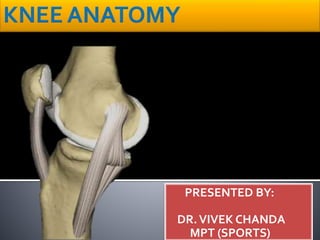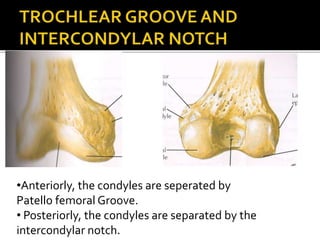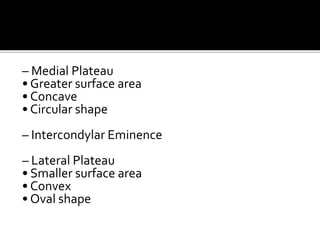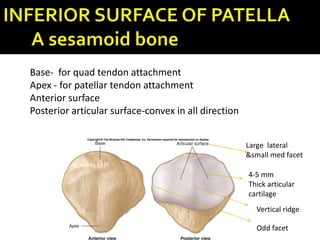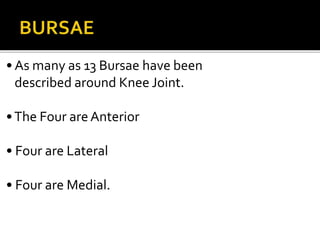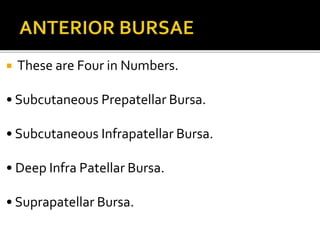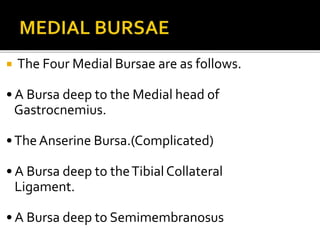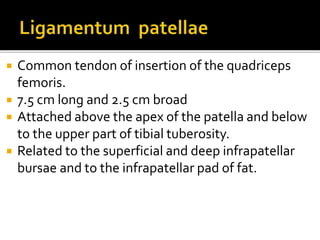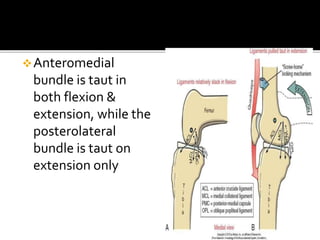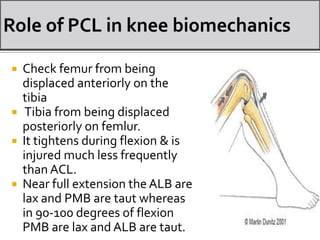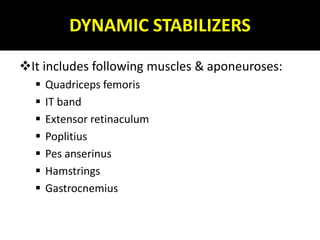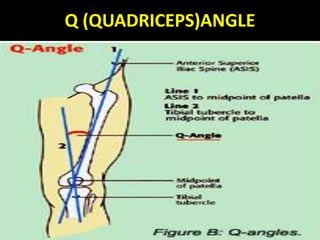The knee is the largest and most complicated joint in the human body. It consists of two condylar joints between the femur and tibia, as well as the patellofemoral joint. The stability of the knee relies primarily on soft tissues like ligaments rather than bony structure. The knee joint is divided into the medial and lateral compartments by the menisci. It contains several important ligaments like the ACL, PCL, MCL and LCL that provide stability. The muscles that act on the knee include the quadriceps, hamstrings, pes anserine group and iliotibial band.
